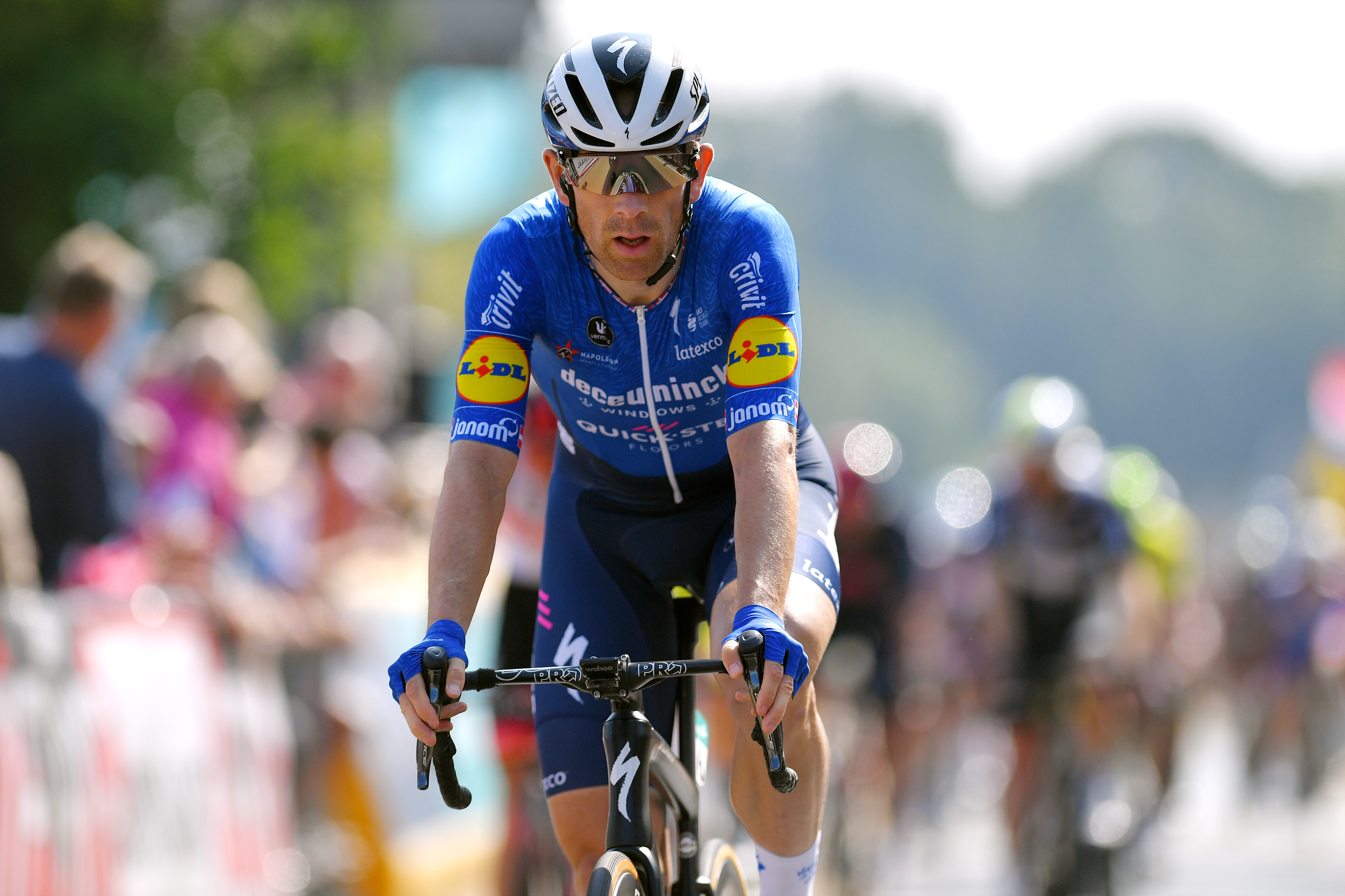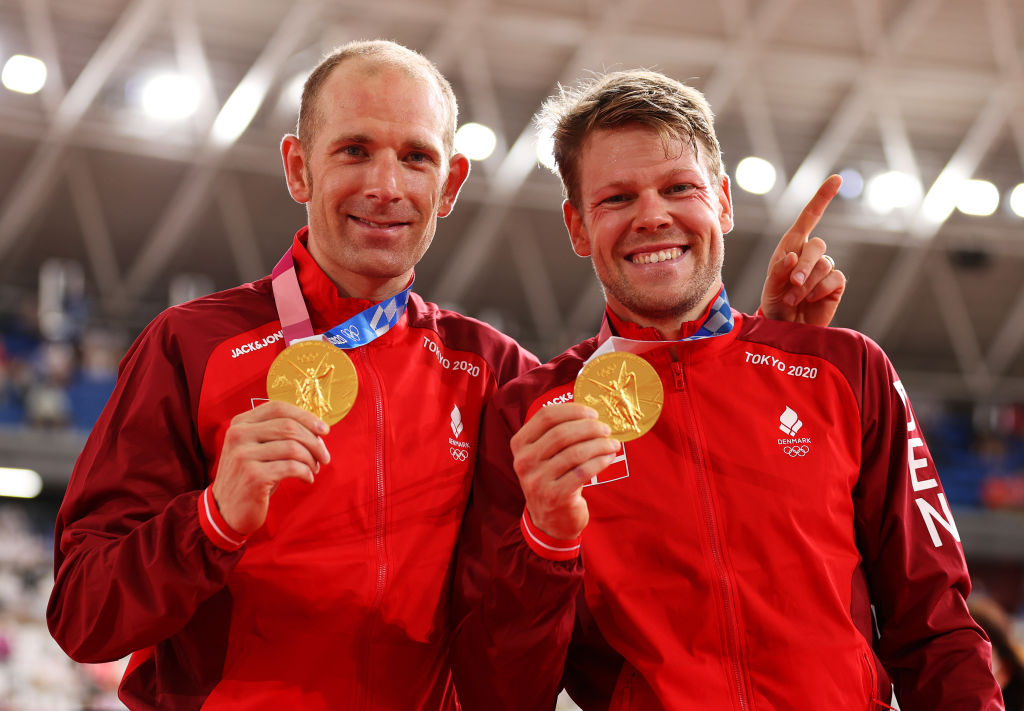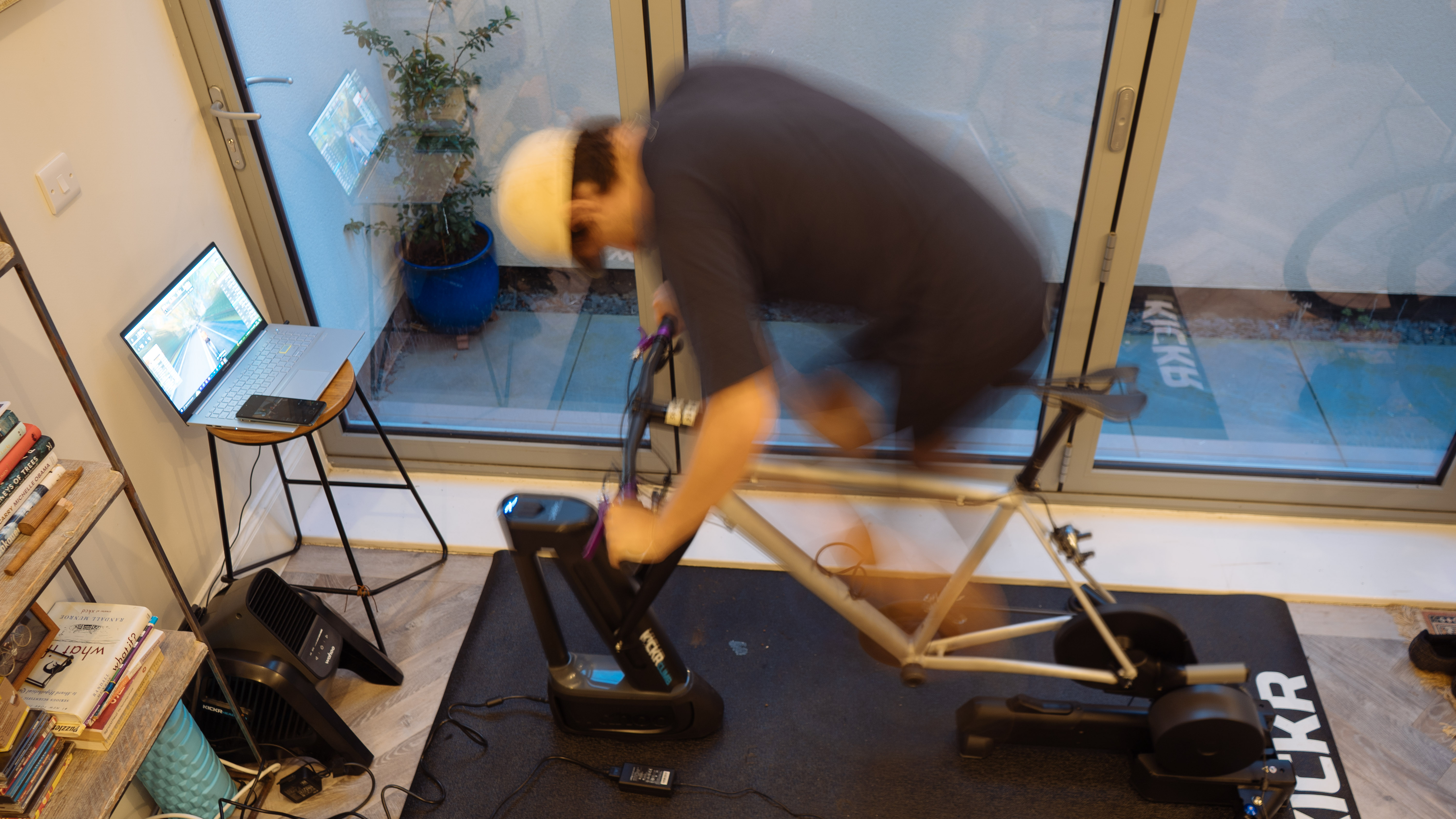Mørkøv on Cavendish, Viviani and the fine art of the lead out
Olympic gold champ discusses Tour de France stage victories, lead-out strategies and more

When it comes to that age-old paradox that cycling is a team sport where one individual wins, you could say that lead-out men like Michael Mørkøv (QuickStep-AlphaVinyl) feel it more intensely than any other kind of rider.
After all, no other rider gets as consistently close to seeing a teammate succeed (literally) as a lead-out man in a bunch sprint, often watching their leader raise his arms in the air just metres ahead of them. And in 2021 alone Mørkøv was lead-out man for teammate Sam Bennett in all seven of his wins and for five of Mark Cavendish’s 10 wins, including all four stages the Manxman took in the Tour de France.
This was prior to Mørkøv taking Olympic track gold in his own right, of course, in the Madison. Which makes it only fair to ask Mørkøv whether he relished being such an integral part of a team’s success, or going to the opposite extreme and savouring his own triumphs (alongside a teammate, it has to be said, fellow-Dane Lasse Norman Hansen) in the biggest sporting event on the planet.
“I enjoy both things,” the 36-year-old tells a small group of reporters without a trace of hesitation when asked during the QuickStep-AlphaVinyl media day. “It was amazing to achieve what I did in the spring with Sam, then in the Tour with Cavendish. And then later on I got my own gold medals.”
Mørkøv sees clear technical similarities between a Madison and the hell-for-leather charge for the finish line on a flat stage of a road race.
“Absolutely. A Madison is very similar to a bunch sprint. It demands some of the same qualities like being able to think ahead about what is going to happen, being ready to move on your instinct and finding your way in a big mess - which is what both bunch sprints and Madisons are," he says.
But when it comes to learning how to do it well, it’s reading the sprint that changes things the most for a lead-out man.
The latest race content, interviews, features, reviews and expert buying guides, direct to your inbox!
“That, the run-in, knowing how your competitors are…there’s also the sprinter’s form. When he was in top form last year, Fabio [Jakobsen] showed that he just needs the right space to be one of the fastest. Cavendish was the same in the Tour de France," he says.
“However, when the sprinter’s not at his best, then we have to ride the sprint a little bit differently.”
Mørkøv unintentionally illustrates that point a little later in the interview, when he’s discussing one of the sprints of which he’s most proud to have piloted - the one that took Cavendish on an equal footing with Eddy Merckx in terms of Tour de France stage wins, at Carcassonne last year.
“It took much more than just finding the way and leg speed, it was a day where everything had to be very well timed. Cav said to me that he was very tired coming into the sprint, so I knew had to be super gentle, which was really hard as a lead out because how do you win a sprint with a guy without using his legs so much? But we just made it.”
At the other end of the spectrum of Mørkøv's top sprints are those where the battle is almost totally one of overcoming impossible odds in terms of the opposition, rather than the stakes being raised by the sprinter being severely on the limit.
“Another one I’m proud of was winning the 2019 London Classic with Elia Viviani. I took third myself, too, but on the last corner we were almost not in play for the victory. We were too far back, almost 20th position. But we really found the right way through and managed to get first and third, so that’s one of the greatest.”
Adaptability and communication
The sheer versatility required by a lead-out man, then, often goes unappreciated, which begs the question of who is the right person for the job. One rider who at the time was rated as the best lead-out man in the world, Giovanni Lombardi - part of a select group of pros that at one point of another led out Italian sprint star Mario Cipollini, including Silvio Martinello, Gian Matteo Fagnini and Mario Scirea - often liked to say the best lead outs were by former sprinters. Mørkøv agrees, but only partly.
“Some former sprinters just don’t get understand how to deliver a rider best. I think the reason Lombardi is saying that is that he was a very smart rider himself," he says.
“But If you just take a random sprinter and instead of sprinting from 200 metres to go, you tell him to do it from 400 metres to 200 metres, he doesn’t really understand how to do it. That’s because it’s all about reading the race, and that lead-out distance is never really fixed to 400 to 200 to go, it’s also about trying to bring the sprinter into his ideal distance as fast as possible and to set it up so he can decide when is the right moment to move.
“So if he doesn’t decide that 200 metres to go is the good moment, I can keep going until 150 for example. The worst thing you can do as a lead-out man is just swing out, flick your elbow and [say] ‘OK, that’s it.”
The creation of effective communication between a lead-out man and his sprinter in what is probably the most stressful scenario of any cycling battlefield certainly doesn’t just happen overnight.
“It can take a long time to find the right feeling, but it depends,” Mørkøv says. “With Elia it took a while. But for example, the first race I did with Fabio [Jakobsen], the Scheldeprijs in 2018, we won. He’s a young guy who trusts my abilities and follows what I can do, showing that he’s a super-fast sprinter himself. Of course it’s best to have a few races to find each other, but after all this racing, me and Fabio, and Cav and me - we’re well-prepared.”
What is notable about Mørkøv is not only his vast experience at lead outs, but his discretion about with which sprinters - often nearly as famous for their ability to ‘go off on one’ as to sprint itself - it was easiest to form a relationship. Nor does he have anything but good words for past sprinters in the team, like Viviani.
“I really enjoy working with all of them,” he says diplomatically. “I’m often asked what are the differences between them and they certainly have different personalities. But in the end of the day, they all have to be delivered 250 metres before the line in the best possible position.”
As for Viviani, “I was obviously really sad when he left the team because he was a really good friend of mine. We worked really well together in the two years he was here and with him I won 10 races in 2018 and again in 2019. I would have loved to have kept working with him, but we are still friends.”
Track experience at the Tour

After last year’s Tour, it was finally time for Mørkøv's own spell in the limelight, taking the gold medal in a tumultuous Madison Olympic race alongside Norman Hansen. But rather than finding the Tour an impediment to his track preparation, Mørkøv says he found it was just the opposite, saying, "I rested a bit, then did a lot of Derny training behind the motorbike to get leg speed, but in general I was in great shape after the Tour and it was the best possible preparation."
Come this July, while it’s still not clear if it’s Cavendish or Jakobsen who will do the Tour de France for QuickStep-AlphaVinyl or indeed both, the chances that it will be Mørkøv leading them out seem good. All the more so given the start in Denmark is just five kilometres from his own house in Copenhagen.
Mørkøv doesn't know only that stage well. “The second stage in Denmark looks like it will be a special stage too, to reach the finish you have to go over a really long bridge so you can’t underestimate it. It’s actually quite a climb and the finish is only three kilometres afterwards so it’s going to be hard to predict.
“I’d say it’d be more like that stage in the Tour de France [stage 10 through the coastlands round St. Nazaire] where Sam won in 2020, we also went over a bridge and it split into small groups by the finish.
“Then stage three goes on small roads at the end, but we’re also used to this in northern France in the first week and it ends up on a boulevard. So I’d definitely expect a sprint there.”
But regardless of how it works out, Mørkøv says, his track experience - and that of Viviani and of course Cavendish - represents a huge bonus in the closing metres.
“One of things that worked well with Elia and also now with Mark is that they understand how to follow me really well. Coming from the track, we have an easier way of sneaking through the peloton. That’s definitely an advantage.”
And in 2022 this July, Mørkøv will perhaps be living something he could barely have expected, racing in the world’s biggest bike race on home soil. As he says, “I just hope I’ll be able to start the Tour there in Denmark, because this really will be a once-in-a-lifetime opportunity for me.”
And one where his lead-out abilities will surely be more valuable than ever, too.
Alasdair Fotheringham has been reporting on cycling since 1991. He has covered every Tour de France since 1992 bar one, as well as numerous other bike races of all shapes and sizes, ranging from the Olympic Games in 2008 to the now sadly defunct Subida a Urkiola hill climb in Spain. As well as working for Cyclingnews, he has also written for The Independent, The Guardian, ProCycling, The Express and Reuters.

